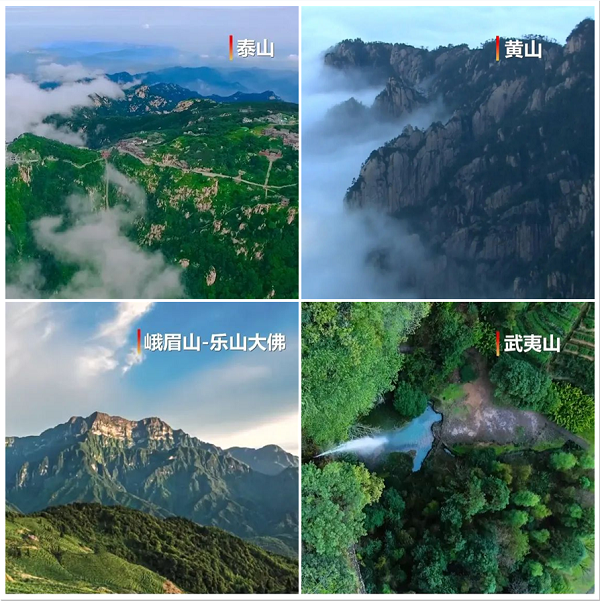
Clockwise from top left are mountains listed as both world cultural and natural heritage items in China: Mount Tai, Huangshan Mountain, Mount Wuyi and Mount Emei Scenic Area. [Photo/WeChat ID: gh_0c73ab80fdea]
A symposium centering on mountains listed as both world cultural and natural heritage items in China was held in the Tunxi district of Huangshan city, in Anhui province on March 23-24.
The symposium involves Mount Tai in East China's Shandong province, as well as Huangshan Mountain and the Mount Emei Scenic Area – including the Leshan Giant Buddha Scenic Area – in Southwest China's Sichuan province and Mount Wuyi in East China's Fujian province.
They were listed as both world cultural and natural heritage items in China in 1987, 1990, 1996 and 1999, respectively.
This year's event aims to further promote the conservation and development of the cultural and natural heritage items and the cities which administer them, as well as strengthen exchanges between the cities.
International organizations, experts and academics, as well as heads of local governments, were invited to Huangshan city to share their experience in protecting world heritage items and promoting sustainable development.
A declaration was also released at the event, which not only summarizes experiences in developing these natural and cultural heritages, but also explores ways to coordinate the ecosystem and development.

